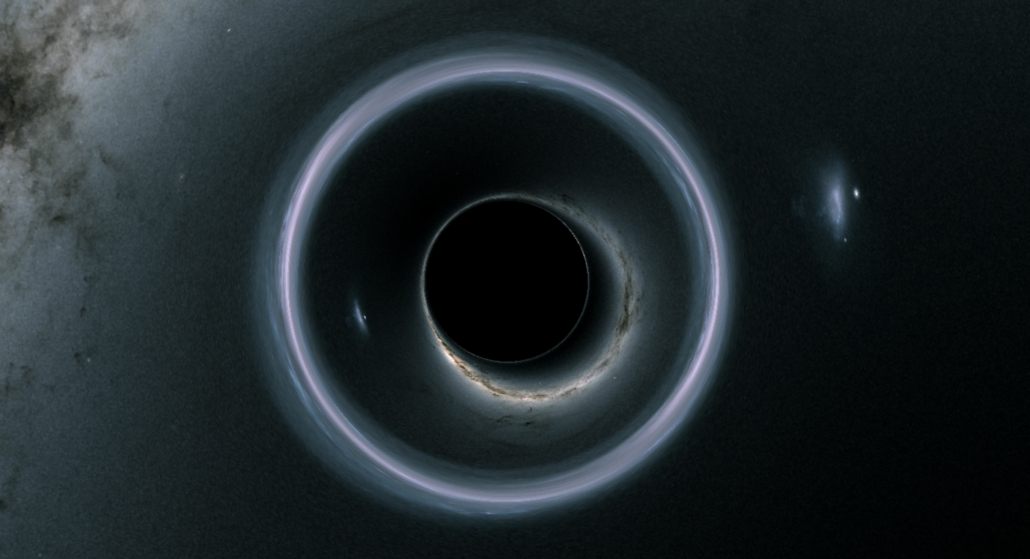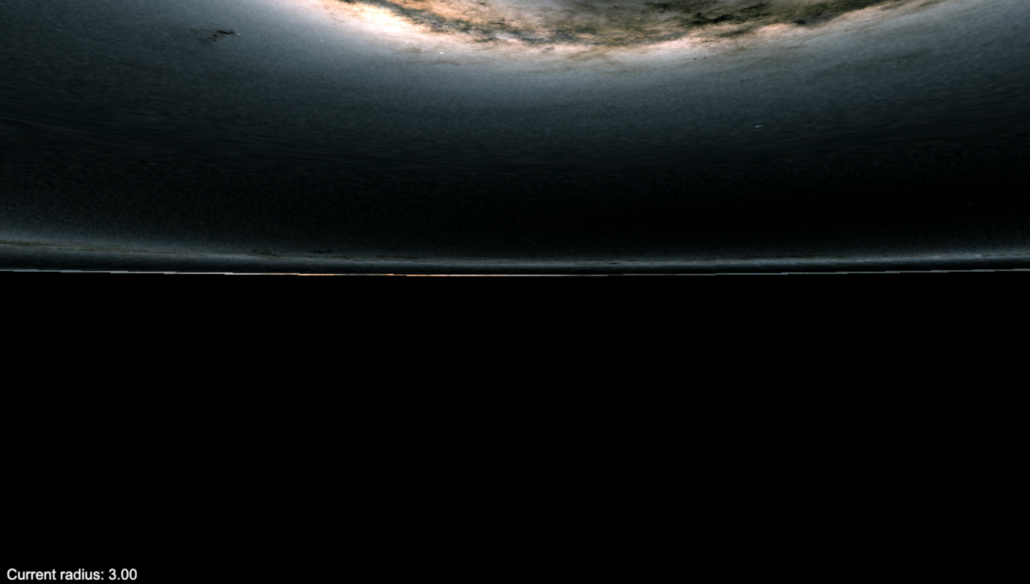OBSERVING A BLACK HOLE
What does WebGR show?
WebGR simulates what an observer would see when flying around in a rocketship, close to a black hole. You can fly around freely, unaffected by gravity, look at the black hole from any angle, and learn about how its powerful gravity bends the path of light rays, thus acting as a gravitational lens. WebGR produces images using calculations based on Einstein’s general theory of relativity (GR).
How can you observe a black hole?
When we speak of `observing’ black holes, we generally mean that we indirectly observe the black hole through its effects on its surroundings. The black hole itself is not directly visible, except through the action of gravitational lensing (light paths bending in the black hole’s powerful gravitational field). The black hole casts a `shadow’ against and distorts the image of, any light-emitting material whose emission passes close to the black hole.
On this figure, we can clearly see the black hole’s shadow, contrasted against the light emitted by gas falling (accreting) onto the black hole. In contrast to Fig. 1, the current version of WebGR shows a non-rotating (Schwarzschild) black hole in a locally empty region of space – a vacuum, meaning there is no gas or other material nearby to interact with the black hole (it is not accreting any material). Thus, in WebGR, we do not see a luminous disk of accreting gas with a black-hole shadow in the middle. Rather, we only see distant stars and other objects on the celestial sphere, like the stars we see at night. The black hole’s shadow is only visible when contrasted against a bright background (see Fig. 2).
Can we see the gravitational-lens effects shown in WebGR in real astrophysical images?
Figure 3 shows an image of a gravitational lens taken by the Hubble Space Telescope. Much like the black hole in WebGR, this gravitational lens distorts the image of the celestial sphere – which consists of light from distant stars.
Figure 4 is an attempt to reproduce the lensing seen in Fig. 3 in WebGR. Here, we place our observer so that the black hole sits directly between ourselves and the lensed object. An ‘Einstein ring’ can then be observed, as the gravitational lens creates a circular set of curved paths between observer and object.
Traveling deeper into the black hole’s gravitational field
Astrophysical black holes are always observed from (near) Earth, so that the geometry is always that of a very distant observer. In WebGR, on the other hand, we can choose to place our observer at any distance from the black hole. Let’s illustrate two special distances.
How is WebGR related to the EHT’s research?
WebGR is based on the technique of general-relativistic ray tracing (GRRT). GRRT is a technique that is used extensively in the EHT, in order to produce simulated observations of accreting black holes. Such simulated observations may then be compared to actual observations made using the EHT network, and in this indirect way, we can learn about which kinds of models are a good fit to the observations. See Fig. 6 for an example of such a simulated observation.
Unlike the scientific codes used in the EHT, WebGR was specifically developed for realtime rendering and outreach applications. In order to achieve this goal, it has (so far) been necessary to leave out the ability to render local emitters and rotating black holes, although its output has otherwise not suffered in accuracy. It is possible that techniques like the ones used in WebGR may prove useful in research in the future, leading to much faster methods useful for creating simulated observations.











